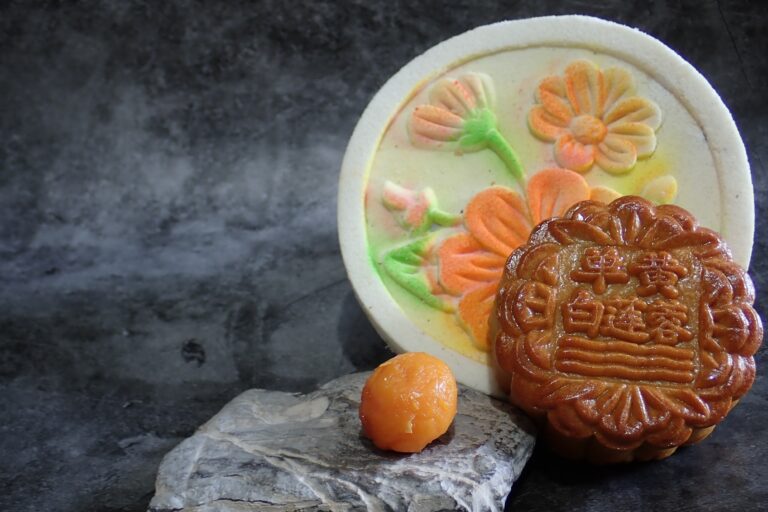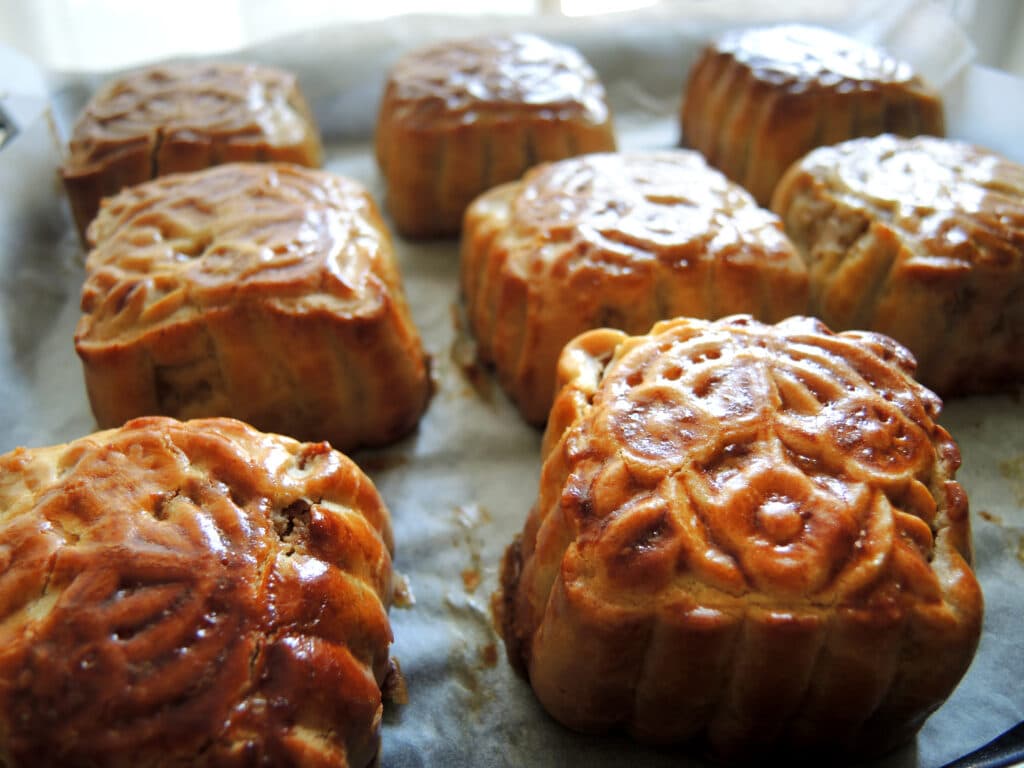Every fall, I look forward to not just a cooler change of weather but another occasion to see my extended family: the Mid-Autumn Festival. We celebrate by getting together for a large family meal, just as we do for the Lunar New Year.
Most years, someone will volunteer their home as our place of gathering; other times, we’ll find a restaurant that serves only the best Taiwanese or Chinese cuisine.
These days, reuniting with your family and exchanging gifts may not be possible because of COVID-19 and expensive travel costs. However, in the spirit of the Mid-Autumn Festival, you can still send good fortune to your loved ones using Remitly. We’re here to make international money transfers both safe and convenient.
No matter what, this important festival is marked by four traditions—and even this year, with social distancing, you’ll find people celebrating this way around the world.
What is the Mid-Autumn Festival?
The Mid-Autumn Festival is the second most important holiday in China after the Lunar New Year, though many cultures across East and Southeast Asia also celebrate it. That includes Asian immigrants around the world, including families like mine.
The Mid-Autumn Festival celebrates the moon and gives thanks for a plentiful harvest. Though often thought of as a Chinese holiday, many other countries observe the Mid-Autumn Festival, including Taiwan, Korea, Japan, Singapore, Vietnam, and Cambodia.
4 Traditions You Can’t Miss During the Mid-Autumn Festival
While customs vary between cultures, the most popular ways of celebrating the holiday include gathering with family, giving mooncakes, hanging lanterns, and moon gazing.
1. Family reunions
The festival is based on a beautiful, bittersweet legend about two lovers (see more below). Alternate versions of the legend describe the Mid-Autumn Festival as the only day of the year when the two lovers can be reunited. For this reason, gathering with loved ones is a central part of the holiday.
In fact, the latter character making up the Mandarin word for “reunion” (團圓) is the symbol for “roundness.”
It’s no coincidence that this occasion for reuniting also celebrates the full moon, which, when full, represents harmony and togetherness.
2. Mooncakes and more mooncakes
The Mid-Autumn Festival wouldn’t be the same without mooncakes. Every year when the holiday rolls around between mid-September and early October, we treat ourselves to these iconic cakes. They’re a small, round pastry with an ornate design on top and some kind of dense filling inside.
An acquired taste by Western standards, my favorite mooncakes are the traditional ones filled with red bean or lotus seed paste and egg yolk.
Mooncakes are a hallmark of the Mid-Autumn Festival—in fact, the holiday is also widely known as the Mooncake Festival. But it’s not the only thing that defines the festival, even if it’s the most delicious.
Beyond simply eating mooncakes, people also give these delicacies to their friends, colleagues, and family in the weeks leading to the Mid-Autumn Festival. With their elaborate designs and elegant packaging, they’re almost more art than food.
Now, mooncakes come in a variety of flavors, including chocolate, green tea, coffee, and even durian. And they’re serious business! In fact, major fashion brands like Louis Vuitton and Gucci offer designer mooncake boxes each year that cost a lot more than your average baked goods.
3. Displaying lanterns
As the Mid-Autumn Festival approaches, you’ll often see homes and storefronts displaying colorful lanterns. They’re more than a decoration, though—lanterns symbolize good fortune and luck in Chinese culture, as in lighting the way to a bright and prosperous future.
Hong Kong’s Victoria Park notably holds an annual Mid-Autumn Festival celebration that includes an elaborate lantern display.
4. Moon gazing
Traditionally, the Mid-Autumn Festival marked a time to worship the moon and its goddess, Chang’e. This involved burning incense and setting out food as sacrifices. However, this custom has since evolved to simply admiring and observing the moon.
In Taiwan, people often barbeque outside at night during the Mid-Autumn Festival, combining two customs into one: reuniting with loved ones over a meal while also viewing the moon.
Pomelos and Traditional Foods of the Mid-Autumn Festival
While mooncakes often steal the spotlight during the Moon Festival, other symbolic foods play an important role in the celebrations, one of which is the pomelo. This large citrus fruit, similar in taste and appearance to a grapefruit, is traditionally eaten during the festival, especially in mainland China, Vietnam, and other Asian countries.
The significance of the pomelo comes from its association with good luck and prosperity. In Mandarin, the word for pomelo sounds similar to the word for “blessing” or “to protect.” The fruit’s round shape, much like the moon, symbolizes completeness and unity, echoing the themes of reunion and togetherness that are central to the holiday. Many families will peel and share pomelos during their gatherings, and in some regions, children wear the peels as hats for fun, believing it brings good fortune for the year ahead.
In addition to pomelos, you’ll find other festive foods that vary from region to region. In Malaysia and Vietnam, for example, people often enjoy savory dishes alongside the sweeter mooncakes. Roasted duck, taro, and water chestnuts are common on tables during the celebration, each dish symbolizing abundance, good health, and harmony. In New York’s Chinatown or even in Beijing, you’ll find special events that showcase these diverse foods during the holiday, blending local flavors with traditional fare.
For those with a sweet tooth, osmanthus-flavored desserts are popular in southern China during the festival. The fragrant osmanthus flower, which blooms around the time of the harvest moon, is often used to flavor rice cakes or teas and is thought to bring joy and positivity. Whether you’re enjoying a tangy pomelo or indulging in a mooncake filled with lotus seed paste, food plays a vital role in bringing families together and honoring the spirit of the Mid-Autumn Festival.
If you’re lucky enough to be in a city like New York or Kuala Lumpur during the festival, you might also catch a lion dance or a dragon dance as part of the celebrations. These performances, accompanied by drums and cymbals, help usher in good luck and prosperity, making them an integral part of public festivities.
The traditions of the Mid-Autumn Festival go beyond mooncakes—whether it’s sharing pomelos, gathering for a meal, or admiring the harvest moon, each custom reflects the holiday’s deeper themes of reunion, gratitude, and hope for the future.
Lantern Festivals: Lighting Up the Night Sky
Another key tradition during the Mid-Autumn Festival is the Lantern Festival, which is celebrated with colorful, intricate lanterns illuminating the night. While lanterns are often seen as decorations in homes, shops, and public spaces throughout the festival, in some regions, the lantern tradition is taken to a whole new level with large-scale public festivals that feature stunning displays.
In places like Hong Kong, Taiwan, and Malaysia, lantern festivals are an essential part of the Mid-Autumn celebrations, with some of the largest and most elaborate displays found in Victoria Park in Hong Kong and along rivers in Taiwan. Here, thousands of glowing lanterns—ranging from simple red paper lanterns to ornate designs shaped like animals, flowers, or mythical creatures—light up the night. Some festivals even feature lanterns shaped like characters from the legend of Chang’e or the Jade Rabbit, further tying the event to the festival’s mythology.
The lantern festival tradition represents more than just beautiful visuals. Lanterns in Chinese and other Asian cultures symbolize the wish for a bright future and good fortune. Families and friends often come together to create their own lanterns or buy them at local markets, writing messages of hope and good luck on them. In some regions, these lanterns are released into the sky or set afloat on rivers, carrying people’s wishes upward or downstream in a symbolic gesture of letting go and looking forward to prosperity and happiness.
Children often carry small lanterns in the shape of stars, animals, or traditional designs as they parade through the streets or parks. In Vietnam, for instance, the Mid-Autumn Festival is also considered a children’s festival, where kids are given colorful lanterns and join in lantern processions, lighting up entire neighborhoods.
The Lantern Festival also frequently coincides with performances such as the lion dance or dragon dance, both of which are performed to ward off evil spirits and bring good fortune. These dramatic, rhythmic dances, accompanied by the beating of drums and cymbals, often take place at public lantern displays, adding energy and excitement to the evening.
Whether you’re admiring the lanterns at a large public festival in mainland China or enjoying a quiet evening of lantern lighting in your own backyard, this part of the Mid-Autumn Festival is a spectacular way to celebrate and wish for a bright and prosperous future for yourself and your loved ones.
The Amazing Origin Story of the Mid-Autumn Festival
Chinese culture is rich with myths and legends, and the story behind the Mid-Autumn Festival is among the most well-known. Although many variations of the tale exist, one of its most popular versions centers around the goddess of the moon—and how she came to be.
According to the legend, 10 suns once circled the Earth, ravaging it with unbearable heat. Severe drought prevented any fruitful harvests, leaving crops withered and villagers starving across China. An archer named Hou Yi, married to a woman named Chang’e, sought to change this. He shot down nine of the suns, leaving only one to provide light to the world.
This tremendous feat impressed many, including the gods. In recognition of Hou Yi’s achievement, the Queen of Heaven rewarded him with the elixir of immortality—something that caught the eyes of many, like Hou Yi’s apprentice, Peng Meng.
But Hou Yi did not want to drink the elixir and become immortal without his wife, Chang’e. Thus, he hid it in the safety of their home. Spying upon him, Peng Meng knew Hou Yi possessed the elixir and wanted it for himself.
On the fifteenth day of the eighth month in the lunar calendar—the day that would eventually become known as the Mid-Autumn Festival—Peng Meng broke into Hou Yi’s home, knowing the archer was away hunting. Only Chang’e was present, and rather than let Peng Meng seize the elixir, she drank it.
The elixir’s magic was immediate, and Chang’e flew into the sky as an immortal. But rather than join the other gods in heaven, she wanted to remain close to her husband—so she chose the moon as her residence and in doing so, became the Moon Goddess.
When Hou Yi returned from his hunt, he was shocked and saddened to discover what had happened in his absence. As a gesture to his beloved wife, he began burning incense and laying out her favorite foods.
Over time, local townspeople began doing the same to commemorate Chang’e’s sacrifice, and the practice spread throughout China as a way to give thanks for a plentiful harvest.
FAQs
Is the Mid-Autumn Festival a Public Holiday?
Yes, the Mid-Autumn Festival is a public holiday in several countries, particularly in mainland China, Taiwan, Hong Kong, Macau, and Vietnam.
What is Zhongqiu Jie?
Zhongqiu Jie (中秋节) is the Chinese name for the Mid-Autumn Festival. In Mandarin, “zhong” (中) means “middle” or “mid,” “qiu” (秋) means “autumn,” and “jie” (节) means “festival” or “holiday.” Together, Zhongqiu Jie literally translates to “Mid-Autumn Festival.”
Why is it called Lunar Month?
Mid-Autumn Festival, the lunar month refers to the time period in the lunar calendar used to determine the festival’s date. Specifically, the Mid-Autumn Festival is celebrated on the 15th day of the 8th lunar month. This timing is significant because it marks the full moon—a symbol of reunion, harmony, and prosperity in many East Asian cultures.


